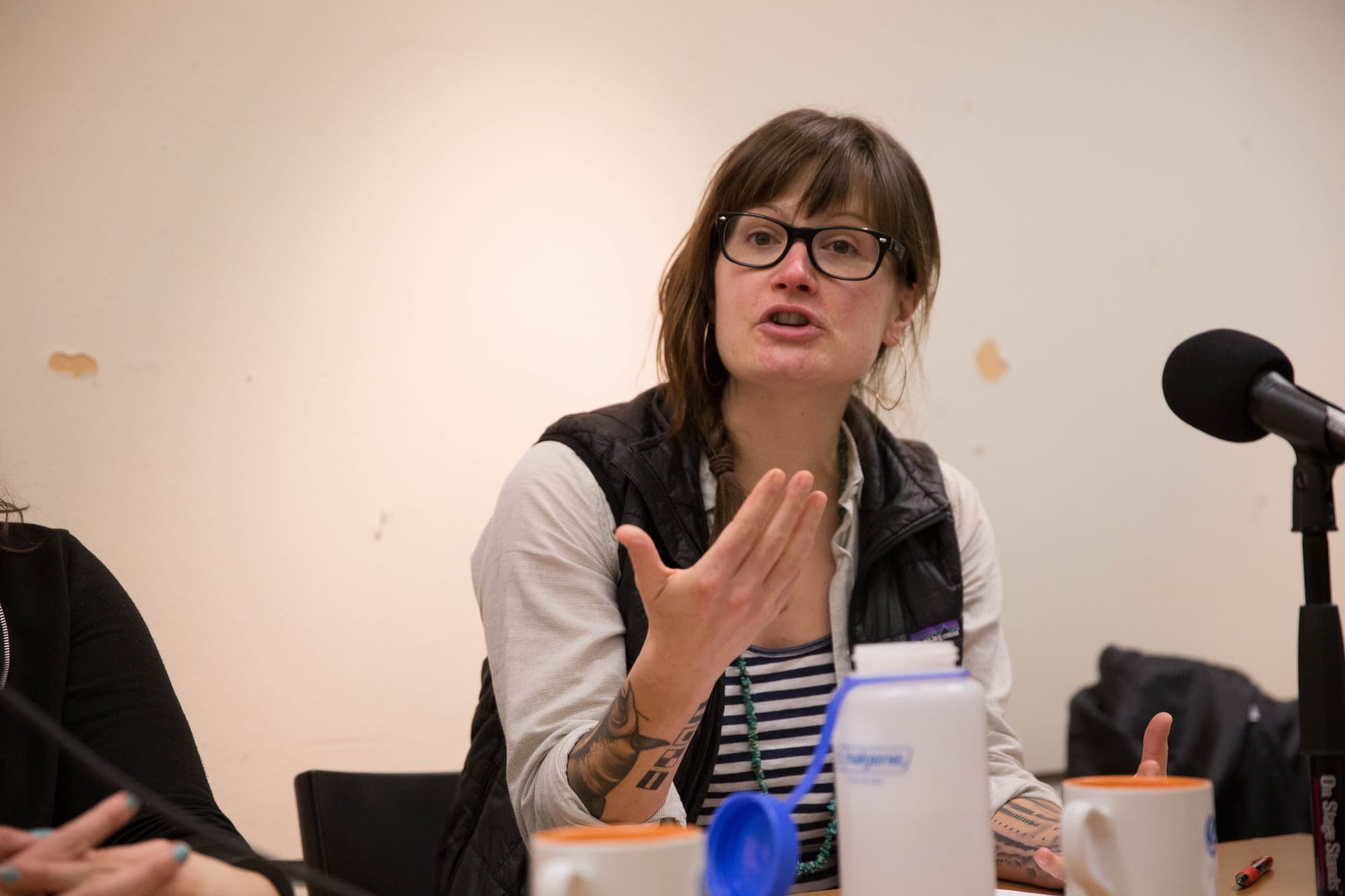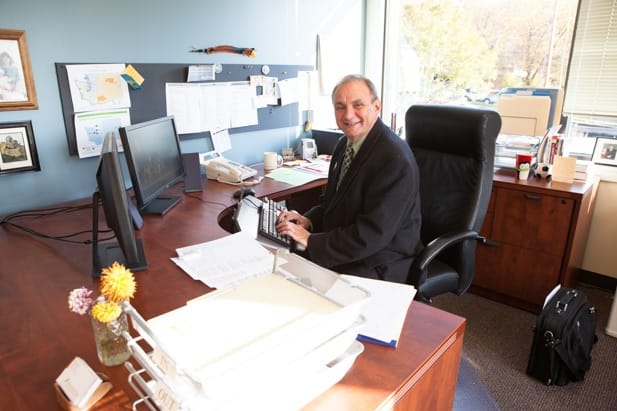Crosscut began its deep dive into the subject of youth homelessness in February, 2014. We started with a Judy Lightfoot story on King County’s efforts to knit a fragmented collection of homeless youth programs, public and private, into an efficient, effective spectrum of care. We’ve talked to a lot of homeless youth in the last year, and to many of the people along that continuum of nonprofits, universities and government agencies who serve and study them. Dozens of articles, podcasts and video came out of those conversations. (You can find them all here — and in a soon-to-be-published e-book.) The stories are inspiring and harrowing and complicated, always complicated. Maybe the most enduring lesson about youth homelessness is that there are no easy answers. Here are five things we’ve learned about youth homelessness:
1. It's persistent.
For several years now, King County has conducted an annual Count Us In survey. In the daylong effort teams of county staffers and volunteers attempt to survey the 12-25-year-olds among us who have no stable home. It is not a scientific census by any means. “We’re not going to get an exact number,” says Megan Gibbard, King County’s Homeless Youth and Young Adult Initiative Project Manager. But the five-year-old effort has given the county a much better handle on the size and composition of its homeless youth population.
The numbers have remained remarkably steady over the last three years: 779 homeless youth and young adults (or YYAs) in 2013; 778 in 2014; 824 in 2015. (The county attributes this year’s six percent uptick, in part, to increases in the number of survey locations — from 46 in 2014 to 71 this year — and shelter beds for young adults.). The consistency “bodes well,” says Gibbard, who views Count Us In data as a solid baseline against which to assess the successes and failures of King County’s efforts to provide stable housing for young people. The tallies tell us that, on average, there are 793 homeless youth and young adults wandering the county. That seems like a manageable problem, says Gibbard, one “we’re able to wrap our arms around.
“Some kids will always run away from home,” she continues. “But when they do there will be a response system in place so that they will not have to spend one night on the streets.”
2. Conflict is the number one cause.
The vast majority, some 80 percent, of street kids become homeless after a disagreement with a parent, stepparent or guardian. The contretemps can be as pedestrian as a spat over curfew or grades. But it can be darker too: Many kids run away to escape domestic violence or in anticipation of an angry response to their sexual orientation.
Most will return home in a day or two, managing to avoid the pimps, drug dealers and other predators lurking out there. Helping families avoid or resolve conflicts would go a long way towards keeping more kids off the streets. This argues for more upstream spending on programs that keep families healthy and intact and kids at home; programs such as the state’s new Family Assessment Response, or FAR, which offers the kinds of family counseling and support services that can help defuse conflicts before they spiral out of control.
In 2014, countywide spending on services for homeless youth totaled about $10.6 million. Various cities, housing authorities and nongovernmental groups such as United Way contributed to that total. King County kicked in about $3 million.
The county can’t say precisely how much of that $3 million supports preventive services, says Carrie Hennen of the county’s Committee to End Homelessness and Youth and Young Adult Initiative, but “spending on prevention has increased in the past few years and investment in family-based work and other prevention activities are a priority” of the Comprehensive Plan to End Youth and Young Adult Homelessness in King County by 2020.
Examples, says Hennen, include the county’s recent investments in Project SAFE and in the Family Reunification Pilot. Project SAFE counsels parents of runaways or potential runaways; the Family Reunification project is helping 50 homeless youth a year to contact a family member or other trusted adult who can take them in. The county has committed $150,000 a year to each program.
3. It affects certain kids disproportionally.
The more the county learns about its homeless youngsters, the more effective it will be in responding to their needs, both before and after they wind up on the street. With Count Us In, a consistent profile is emerging. Homeless youth are overwhelmingly black (34 percent) and gay and transgender (22 percent). Native American youth and foster kids are also at greater risk. Why this so-called “disproportionality” persists is not exactly clear, though we do know more about its causes in certain of the demographic categories.
In the case of LGBTQ youth, for example, their sexual or gender orientation drives many from their homes. Domestic violence plays a big role too. “We see kids targeted because, compared to their siblings, they seem more vulnerable,” says Shannon Darby-Perez, Youth Services Program Director at the Northwest Network, which serves LGBTQ youth. “Bullies or violent folks are skilled at picking people who are more vulnerable — and less likely to tell about the violence.”

“We’ve made considerable progress on the queer kids’ experience,” says King County’s Gibbard (at left). With funding from the Pride Foundation the county is partnering with Northwest Network and five other agencies to build and tailor more services for LGBTQ youth. “African American kids are a different story,” says Gibbard. “We haven’t started work on youth of color in a meaningful way yet.”
The drivers of homelessness for African American youth are systemic and intransigent. Think racism and poverty. But the lack of well-placed resources definitely plays a role too and that, says King County’s Gibbard, is a good place to start.
“South Seattle’s 98118 zip is an area where most young people are counted [during the Count Us In survey], and it has the lowest concentrations of resources,” she says. (Other counties across the state face even more severe shortages; if you’re under 18 in Mason County, there is no overnight shelter for you.) King County plans to begin tackling the South Seattle shortage this year, says Gibbard, “so young people don’t have to leave their neighborhoods to get access” to shelters, counseling, job training, etc. One county initiative is a rental assistance program for young African American adults to be administered by one of South Seattle’s community agencies.
4. It is costly and pervasive.
Youth homelessness stresses every institution in our community that serves young people, from public schools and libraries to the health care, foster care and juvenile justice systems. As writer Gordon Weeks points out in his story about Mason County, the number of homeless students in Washington’s public schools has risen a staggering 47 percent in the last five years. Many of those kids may wind up in jail or foster care as a result of their homelessness — or find themselves on the street after a stint in juvie, foster care, etc. A never-ending loop of bad luck and desperate choices.
5. It is a chronic, but manageable problem
In the last several years, the organizations and agencies — public and private — that serve King County’s homeless youth are more coordinated and effective than they’ve ever been, working together (most of the time, well) to help keep kids off the streets, out of jail, in school, well-fed, with their families and on their meds. The level of collaboration isn’t necessarily unique, says Carrie Hennen. “Portland has very strong regional alignment and collaboration related to YYA homelessness.” But King County's coordination is by no means the norm.
“We are getting smarter and better as we get more data-driven,” says Jim Theofelis, executive director of The Mockingbird Society and a longtime, well-respected advocate for at-risk youth. “Providers have worked hard to figure out the best evidence-based interventions.” Newer, data-based methods are being applied, with success, around the state. (FAR is one example; The Mockingbird Society’s HUB model for foster care is another.)

Theofelis began his long social service career as a street outreach worker in downtown Seattle. His shift started at 10pm. His goal was to win the tug-of-war over street kids, making sure they knew that drug dealers and pimps weren’t the only ones on the prowl at two in the morning.
He saw his street worker self as “a representative from the greater community” delivering a powerful message to street kids: “We know you’re out there; here is a lifeline to get back in.
“The predator has an ugly outcome in mind,” says Theofelis. “I have a more righteous outcome. But we’re both trying to convince this youngster to trust and rely on us.” The righteous, he insists, “should not concede this turf to the predators.”
Like Megan Gibbard, Theofelis views youth homelessness as a chronic problem. “I see it more like a healthcare issue,” he says. “There are always going to be sick people, and there are always going to be hospitals to care for them."
Similarly, there will always be homeless kids. The trick, says Jim Theofelis, is to perfect a system that finds them quickly, intervenes effectively and sets them on a safe, stable and productive path.



